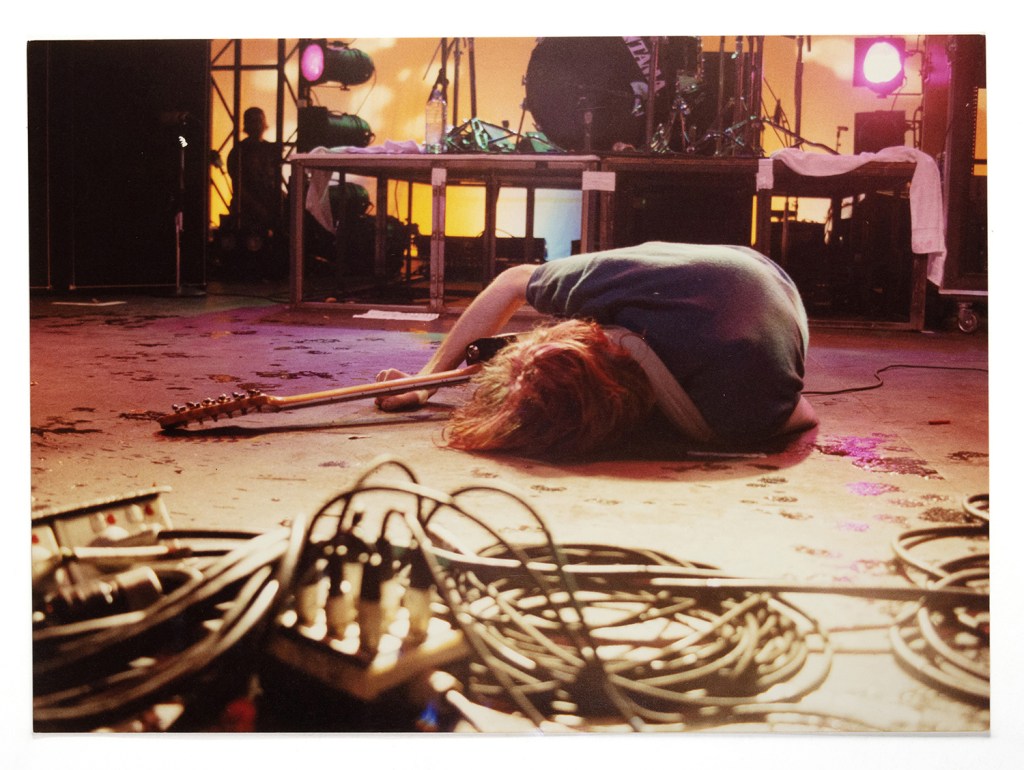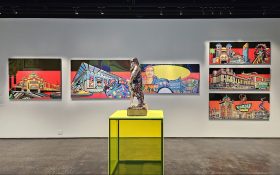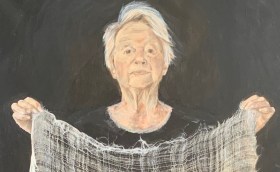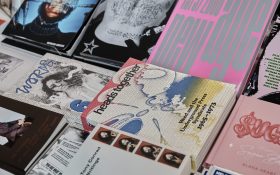Exhibiting the vast archive of music promoter Stephen ‘Pav’ Pavlovic, Unpopular offers a unique insight into a scene founded on the seemingly infinite possibilities of collective youth, energy and generosity of spirit.
Recently opened at Powerhouse Ultimo, Unpopular features more than 200 objects collected by Pavlovic, the visionary who brought celebrated international music acts to Australia – such as Nirvana – and launched the iconic Summersault Festival.
This goldmine of 90s grunge includes concert photos, graphic art, set lists, handwritten letters and oral histories from those who were there – alongside previously unseen videos and unheard demos.
There are also on-loan objects in the eclectic mix, notably Kurt Cobain’s Martin guitar, which was played during his 1993 MTV Unplugged performance.
The ironic title of the exhibition is a nod to the contrarian forces that defied the hedonistic excesses and hubris dominating 80s corporate music. And throughout Unpopular – developed by Pavlovic himself – is a real sense of human exchange, of intimacy, of shared experience, making music and noise together.
Dramatic concert photos dominating one room portray luminaries like Pavement, Bikini Kill, Courtney Love and Beastie Boys in small clubs and venues, free falling through their sets in harness with tightly packed crowds.
Meanwhile, the exhibition’s spotlight on Nirvana, which features live footage of the band’s first appearance at the Phoenician Club in Sydney, 1992, also includes an impassioned handwritten fan petition that protests (sometimes violently) against the cancellation of the band’s Perth show.
The breadth of the exhibition extends to a dedicated space for bill posters, demonstrating how the movement’s DIY ethos spurred on bold visual statements from artists.
Then there’s the ‘People of Summersault’ section, which includes the video No Alternative Girls (directed by Tamra Davis, 1994), which highlights how female artists surged into the fray, carving a space for their own voice and autonomy.
Of course, a downbeat poignancy can also be found in these candid snapshots of immediacy and youth from yesteryear – not least because they reflect the vibrancy of a pre-pandemic live music scene. There’s also the inevitable cognitive dissonance of grunge artefacts now achieving something like museum-establishment status (particularly the Martin guitar, touted as the most expensive guitar in the world).
However, the exhibition commits itself to the spirit of the movement, whether that’s the recreation of seedy pub carpet in the Nirvana exhibit or newly recorded audio material from the likes of Dave Grohl, whose reminiscences of his band’s Australian tour reflect timeless enthusiasm for the rock ‘n’ roll dream.
Meanwhile, new work by artist Lillian O’Neill and filmmaker Julian Klincewicz – the latter’s video projection A Boundless Drop To A Boundless Ocean using archival footage of the Summersault Festival – effectively expands upon the ongoing significance of memory making, belonging and identity.
True, purists may demand the music within the space, in general, be played more loudly (as in deafeningly) to absolutely capture the zeitgeist of grunge. Nevertheless, the exhibition should be a mecca for those who grew up in the mosh pits of the era, if only to be reminded how great it was.
Read: Theatre review: The Lovers
However, at a time when live performance is under threat, depressed and reckoning with the impact of the pandemic, the vision of a thriving subculture will have significance – and potentially inspire – any music fan.
Unpopular
Powerhouse Museum UItimo
Stephen ‘Pav’ Pavlovic (Creative Director), Alice Babidge, Lillian O’Neil and Julian Klincewicz
Free entry
Unpopular will be on display until 4 June 2023.





